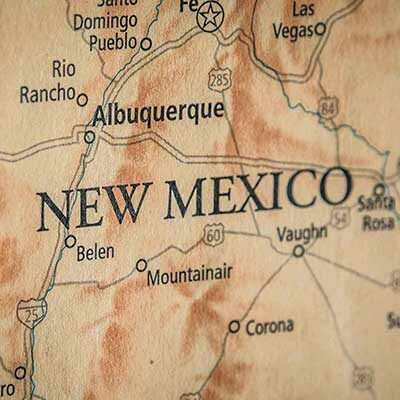LANL: High PFAS levels not being released into local waters
Laura Paskus
March 3, 2021
Last week, I reported that PFAS, or per- and polyfluoroalkyl substances, had been found in water samples collected at Los Alamos National Laboratory. Most of the samples scientists collected from groundwater, effluent, and wastewater treatment plants revealed just traces of various members of the PFAS family, including perfluorooctanesulfonic acid (PFOS) and perfluorooctanoic acid (PFOA).
But in some of the database’s water samples, PFAS levels were extremely high.
The reporting was based on data from Intellus New Mexico, a publicly accessible database of environmental monitoring data provided by the lab, the New Mexico Environment Department (NMED), the U.S. Department of Energy and local and tribal governments. The database includes information ranging from groundwater levels to the analysis of samples for thousands of different chemicals in water, air, and waste.
Last Monday, I reached out to officials at LANL, requesting an interview to speak with experts about PFAS and Intellus. That same day, I spoke via video conference with a handful of officials from the New Mexico Environment Department. LANL officials did not grant an interview, but we waited to publish the story until Wednesday afternoon, after receiving an emailed statement from a DOE spokesperson.
On Thursday evening, officials from LANL responded that the story required a significant correction.
The reported samples with high levels of PFAS, they wrote, had not been collected from waters within the environment. Rather, according to an emailed statement, the samples were from closed storage vessels containing AFFF, or aqueous film forming foam. That AFFF, according to the lab, “is safely stored on site and has not been released to the environment.”
I requested additional information and an on-the-record interview via Zoom with lab officials about the samples.
I also reached back out to NMED, asking if they had additional information about the high samples. NMED wrote back that the high samples from Intellus included a code which, “confirms they are a waste sample.”
Now, NMED has confirmed that “It is NMED's understanding that the waste samples were collected from totes used to store used firefighting foam.”
Intellus questions remain
Many questions remain. LANL still hasn’t scheduled an on-the-record interview.
I’d like to understand, for example, why samples from a closed storage container—taken in the fall of 2020—were still included in Intellus’s database, whose "records include both recent and historical information about samples and laboratory analyses for air, soil, sediment, biota, and water.”
According to the website, “Intellus was established to provide complete transparency into the Laboratory's environmental monitoring and sampling data. Specifically, it is intended to ensure that members of the public have real-time access to the most recent data used by managers, analysts, and scientists to help guide environmental stewardship decisions. System data are updated nightly and all data are verified and validated before release.”
According to an email from LANL, the storage vessel "contained some water, which needed to be accounted for in the reporting" and the Intellus software miscategorized the readings. And the lab is working with the software developer to fix the problem.
DOE’s AFFF storage
As you all know, we’ve been covering PFAS contamination in New Mexico. The project started by focusing on military installations like Cannon and Holloman Air Force bases, and we’ve continued to ask questions about where else in New Mexico PFAS might be stored or leaking.
Exposure to PFAS have been linked to reproductive and developmental problems, liver and kidney disease, and immune system problems. It's also been tied to high cholesterol, low infant birth weights, thyroid hormone disruption, early-pregnancy miscarriages, and cancer—including non-Hodgkin’s lymphoma and kidney, testicular, prostate, and ovarian cancers. In 2016, the U.S. Environmental Protection Agency set a lifetime health advisory for exposure to PFOS and PFOA—two types of PFAS—at 70 parts per trillion. But without a federal regulatory limit for PFAS, states like New Mexico haven’t been able to compel the military to clean up the contaminated sites.
Earlier this year, I asked NMED what facilities either monitor for PFAS or are required (or have been requested) to test for the toxic chemicals.
The list of places ranges from the Marathon Gallup Refinery to a number of National Guard Armories statewide.
In addition, NMED noted that that Los Alamos National Laboratory was conducting PFAS testing. At that time, I also learned about Intellus New Mexico. When asked about the presence of PFAS at Los Alamos, an NMED official surmised they were from Cold War-era activities at the lab.
Now, the presence of AFFF on site at LANL raises additional questions.
The Air Force used those same firefighting foams for decades beginning in the 1970s, contaminating the groundwater beneath Cannon and Holloman Air Force bases, and at hundreds of other military installations nationwide.
As the Defense Department widened its investigations of where AFFF was used or stored, in 2019, the Pentagon added four other New Mexico sites to an updated list of installations where PFAS from firefighting foams may have polluted nearby waters. These include the Army National Guard armories in Rio Rancho and Roswell, the Army Aviation Support Facility in Santa Fe, and White Sands Missile Range. Last year, we learned that AFFF had been stored at Fort Wingate, as well.
NMED had also accessed LANL’s PFAS data through Intellus, and communications director Maddy Hayden noted that “LANL and other entities are not required to notify NMED if they are storing AFFF.”
LANL isn’t the only U.S. Department of Energy facility where AFFF has been used or stored.
PFAS from AFFF has been found in water wells and groundwater at Brookhaven National Laboratory in New York. And in 2019, DOE’s Office of Environment, Health, Safety and Security encouraged other DOE sites to consider identifying current and historic uses of PFAS and to evaluate “next appropriate steps to characterize potential contamination pathways.”
Meanwhile, last week NMED sued DOE over its failure to clean up legacy waste at Los Alamos.
According to the complaint filed in the First Judicial District Court, NMED says that DOE has not made progress under a 2016 cleanup agreement. In addition, NMED says that Consent Order itself is inadequate due to “a lack of substantive and appropriate clean-up targets for the coming years.”
With respect to the presence of PFAS, this is a developing story and I’m still awaiting an on-the-record interview with LANL officials. But I’ll continue to work to ensure New Mexicans have accurate and up-to-date information.
If you’ve been affected by PFAS contamination in your community here in New Mexico, call our tip line at (505) 433-7242. To read more coverage of PFAS in New Mexico visit “Groundwater War: New Mexico’s Toxic Threat,” which includes a timeline of events and studies on PFAS.






